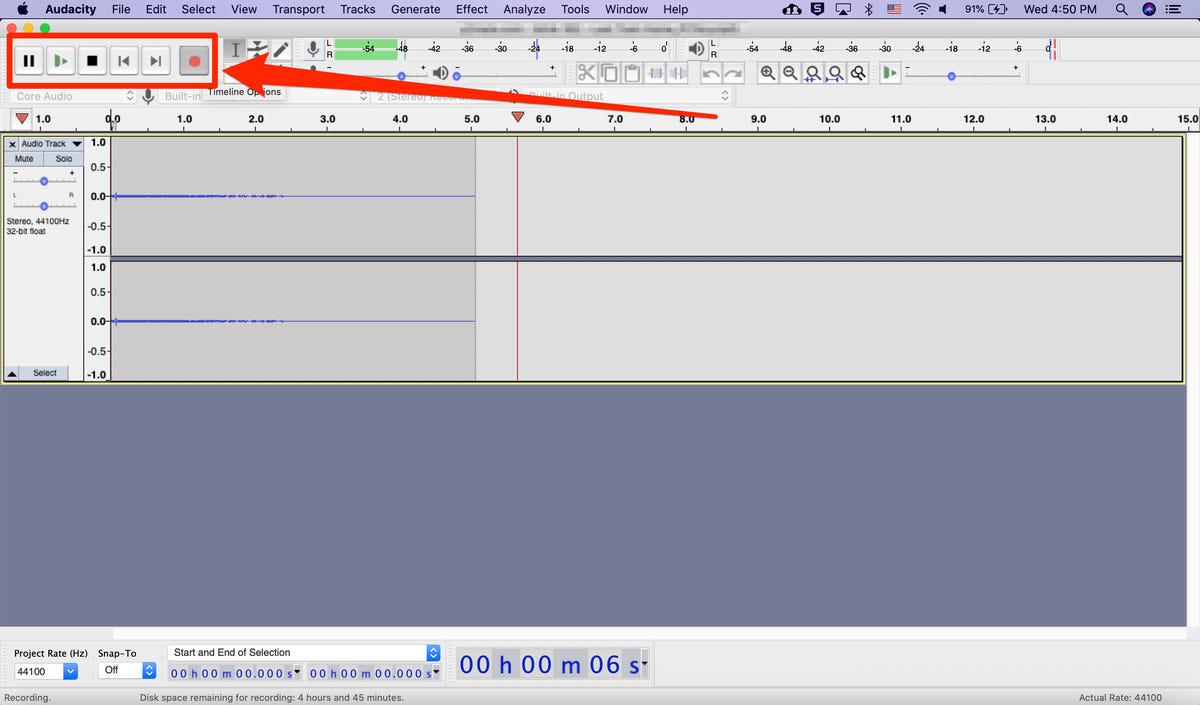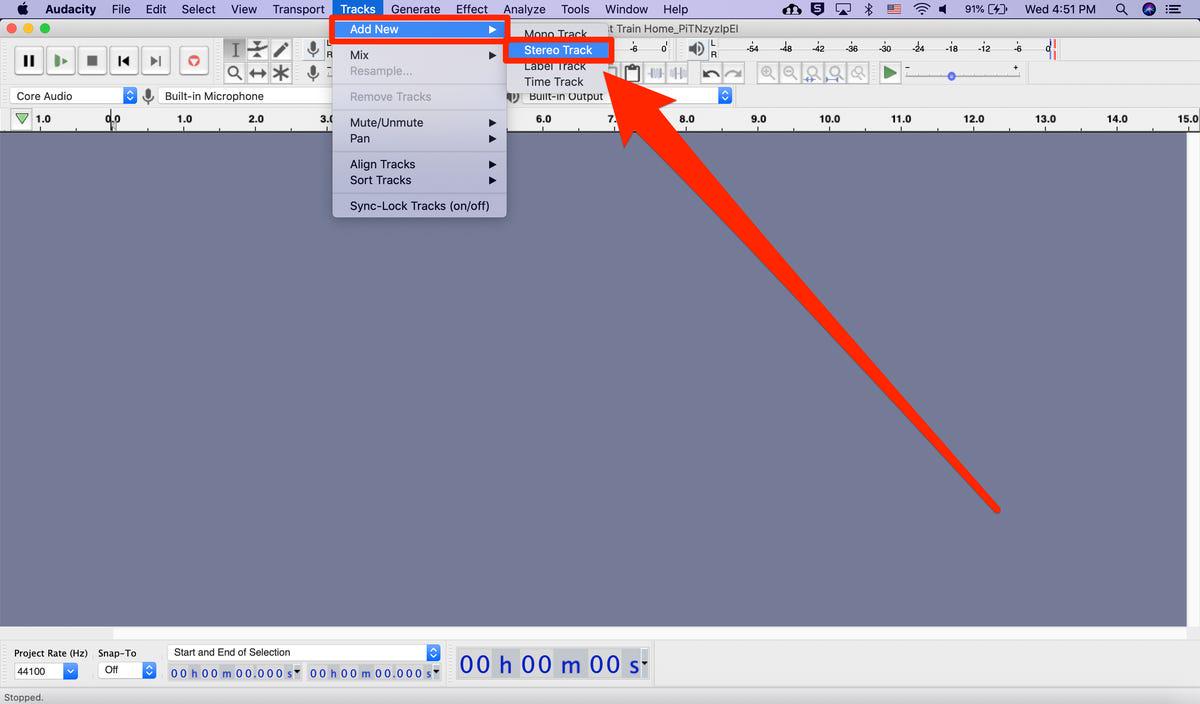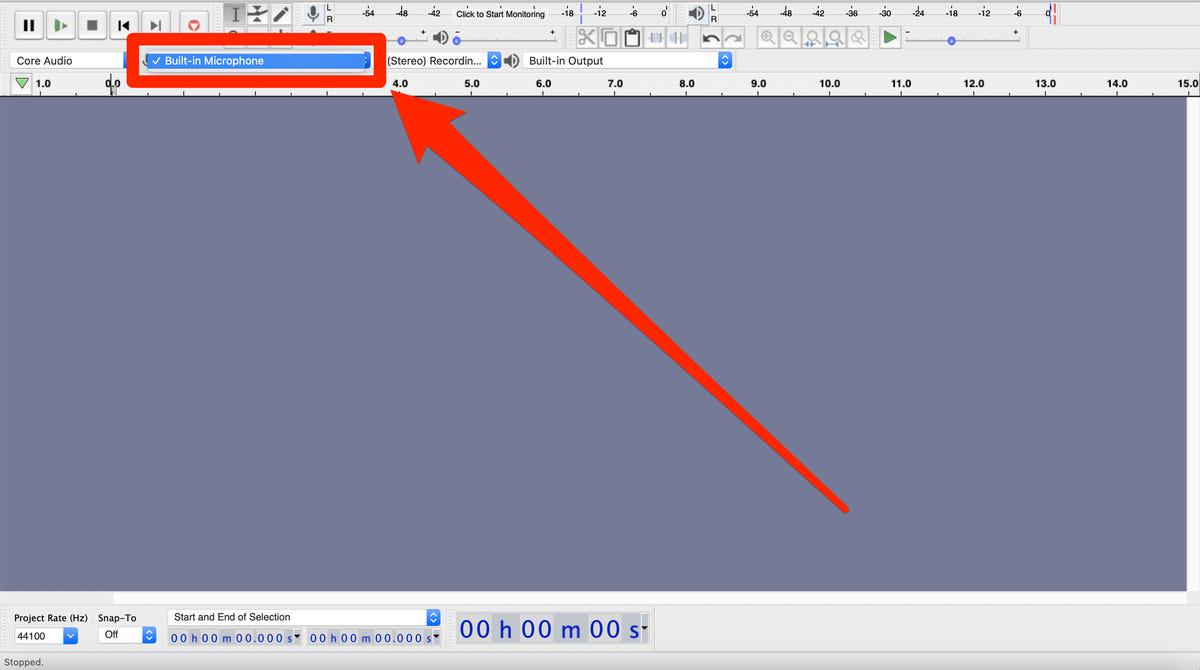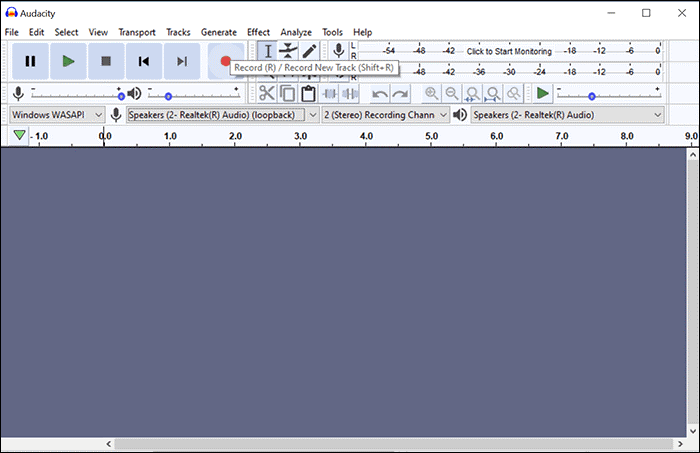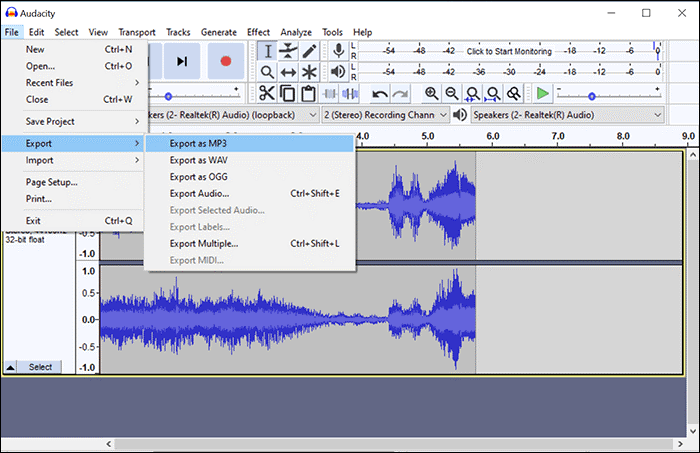Providing a wide range of features for recording, editing, and mixing audio, Audacity is known as a renowned open-source tool for various audio projects. Besides professionals and amateurs, some users also use it to capture streaming music. How well does it perform in terms of features?
In this comprehensive review, we'll take a deep look at Audacity's key functionalities, giving you a full understanding of its how-to guide, safety policies, and pricing. Also, we will offer you the best all-in-one alternative for streaming music, taking your experience of getting music from streaming platforms to a new level. Let's get started!
Key Features of Audacity
Since its launching in 2000 as a simple audio editor, as of today, Audacity has gradually grown into an audio tech giant. Being capable of capturing various audio types and allowing users to import and export audio files in a wide range of formats with ease, it remains a go-to choice for audio professionals and enthusiasts. With support for various operating systems and the ability to integrate additional plugins, you will be surely pleased with its enhanced extensivity.
Capturing Various Types of Audios
The flexibility in capturing audio from different sources makes Audacity an unparalleled tool for audio processing. From input devices like microphones to various line-ins such as mixers, record players, audio interfaces, etc., or computer playback like streaming music from Spotify and Apple Music, Audacity is the tool to deal with. What's more, it even allows users to import existing audio files directly from the computer. With Audacity, users can effortlessly bring their audio ideas to life.
Support Multiple Format Conversion
It’s a time-and-energy-saving feature of Audacity. By supporting a wide range of audio formats including MP3, M4A, AIFF, FLAC, WAV, and more, instead of converting audio files to a specific format in advance, users can effortlessly import, export, and convert them on one. This feature simplifies working with diverse audio formats and allows users to convert files into different formats as needed. Additionally, Audacity allows users to combine clips from multiple formats within the same audio project, making the editing process much easier.
Powerful Audio Editing Capability
Audacity stands out as a versatile audio editing tool with powerful features tailored to meet diverse needs. With it, users can capture audio from various sources, edit audio segments effortlessly, apply a wide range of built-in effects, and mix multiple tracks seamlessly. It is safe to say that Audacity is an all-in-one tool that empowers users to create professional-quality audio projects with ease.
Great Compatibility and Extensibility
Audacity is compatible with a range of operating systems, including Windows 11/10/8.1/7/Vista, macOS 12 & 13 (OS X10.9 Mavericks or later may be also supported), and Linux (specifically Ubuntu 22.04). It also supports various plugins like LADSPA, LV2, VST, VST3, Audio Units, Vamp, and Nyquist, offering users extensive options for audio processing.
How to Use Audacity to Capture Audio
Audacity's versatility and functionality contribute to its growing number of users. In this section, respectively taking the recording of microphone sound and music playback as an example, we’ll illustrate how you can capture audio with Audacity.
Use Audacity to Capture Microphone Sound
-
Open Audacity and locate the recording device tab near the top of the screen. To be more specific, the recording tab is right above the recording area, with a microphone icon to the left.
-
Click the tab for a dropdown menu showing all connected recording devices, and choose your microphone from the list. Please make sure the microphone is properly connected and turned on for recording.

-
At the top of the screen, select "Tracks" to add a new track, and then select "Add New" to pick the track type you want to go on with. Either a Mono or Stereo track is acceptable for most recordings.

Start recording by clicking the red circle recording button at the top, or you can simply press “Shift + R” at the same time. Once it starts working, a waveform of your voice will appear on the track.
-
To stop recording, click the black square stop button located next to the recording button.

Use Audacity to Capture Music Playback
-
Launch Audacity on your computer. If you’re using a Windows computer, select "Windows WASAPI" from the first dropdown menu. Then, next to the microphone icon, choose your computer's speakers as the audio source.
For Mac computers, it is a great pity that this option is unavailable. Mac users have to first install another third-party software, for example, Soundflower, and set it as the input device.

-
Start streaming the music you want to capture and click the red recording button. You can monitor the live recording progress on your screen.

-
Whenever you want a stop, click the stop button in the top menu bar.

-
Save your recordings as per the following option: Go to the "File" menu, select "Export", then choose "Export as MP3" or any other format you want, and finally select a destination folder for the audio.

Is Audacity Safe?
Generally, Audacity is a safe and reliable tool. During our tests, no alerts from antivirus programs showed as well as no other third-party software bundled. The team also clarified they only collected data relevant to error reporting (such as device information) and the software updates are under the European General Data Protection Regulation (GDPR).
If you are going to get Audacity, for safety, it is advisable to get it from trustworthy sources including its official website, Microsoft Store, and Fosshub.
Is Audacity Free?
Yes, Audacity is free to use. It's an open-source software available for download without any cost. All users can easily access it from the official website or other trusted sources without paying any licensing fees.
The Audacity team also assures users on their website that the software will always remain free for everyone. Every user can record and edit spoken content, manage multiple tracks, apply basic effects, and capture, edit, or analyze various audio environments with the help of it.
Audacity for Streaming Music Recording - Is It a Good Idea?
As Audacity can be used for recording streaming music, we naturally wonder how easy and great it can fulfill the task. Upon the test results from several team members, here we have a summary: Audacity is surely a never-go-wrong choice for someone who is fairly tech-savvy. For those who never mind taking too much time to get the output audio, it can be used to record streaming music for playback.
However, Audacity is loaded with tons of features at first sight of the main screen, which is likely to stop novices from exploring further. Besides, as you are recording music when streaming it, capturing some noise from the surroundings seems unavoidable. Furthermore, you have to record the songs one by one, which means it would be time-consuming when dealing with multiple tracks.
Best Alternative to Audacity for Streaming Music Recording
Since Audacity’s output quality for streaming music recording is not so impressive, we dived deeper into some alternatives. Among these, TuneFab All-in-One Music Converter is so fascinating as a powerful tool to help you download music from popular music streaming platforms such as Spotify Music and Apple Music to local devices in lossless quality.
Key Features of TuneFab All-in-One Music Converter:
• Great compatibility. The software works seamlessly on Windows and MacOS. You can start
streaming your favorite tunes whenever you want and do not worry about the device's compatibility.
• The built-in web player. You will be navigated to the built-in web player once you
decide the platform you want to go along with, and you can easily change it to another. Therefore, you
can download songs from different services within one simple tool without switching between music
streaming apps.
• Multiple output formats. For easier transfer and management of the downloads, the team
has worked hard to make the tool able to convert songs to various audio formats like MP3, M4A, WAV,
FLAC, etc.
• ID3 tag preservation. As the key information such as song title, artist, album cover,
etc. are well preserved, it benefits users especially when they want to sort the downloads in a specific
artist/album folder for playback.
Taking the steps to download and convert Spotify Music to MP3 with TuneFab All-in-One Music Converter as an example, we aim to show you how easy it is to save your favorite tracks from streaming platforms with the tool.
Step 1. Get ready by downloading, installing, and launching TuneFab All-in-One Music Converter on your computer. On the main screen, select the platform you want to download streaming music from. Here we take Spotify as an example.
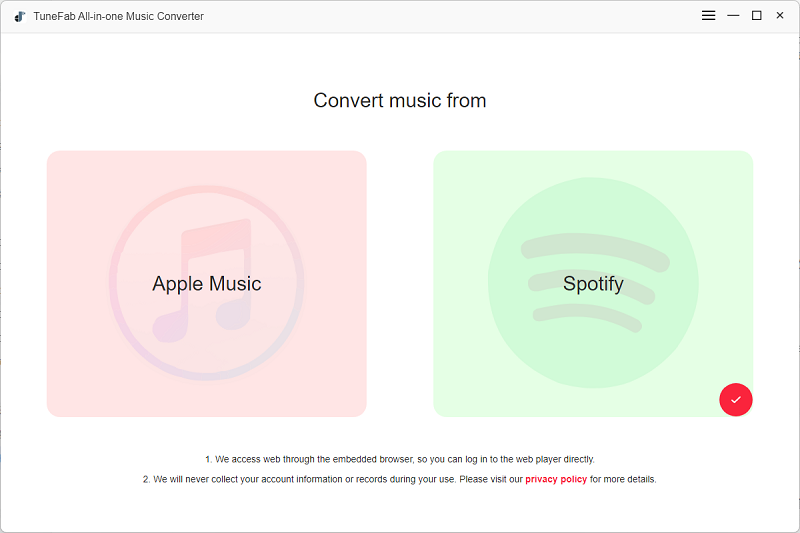
Step 2. Log into the selected platform. Please do not skip this must-step, or you can't go on with the downloading.
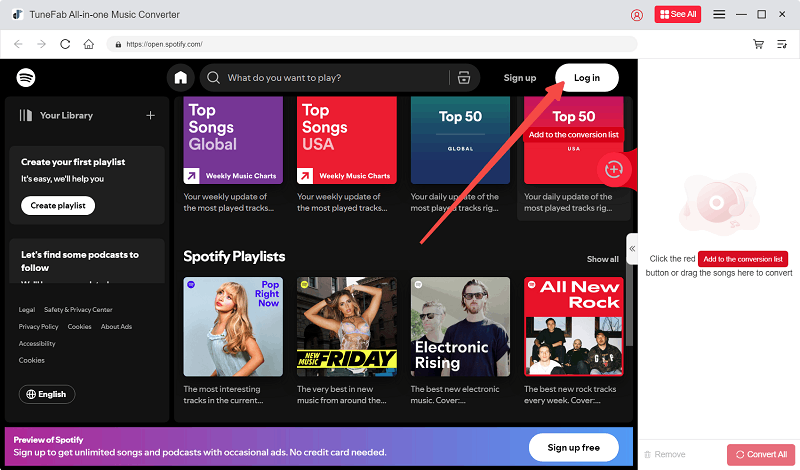
Step 3. Search for songs that you want to download, drag & drop it to the red "+" button floating on the right of the screen.
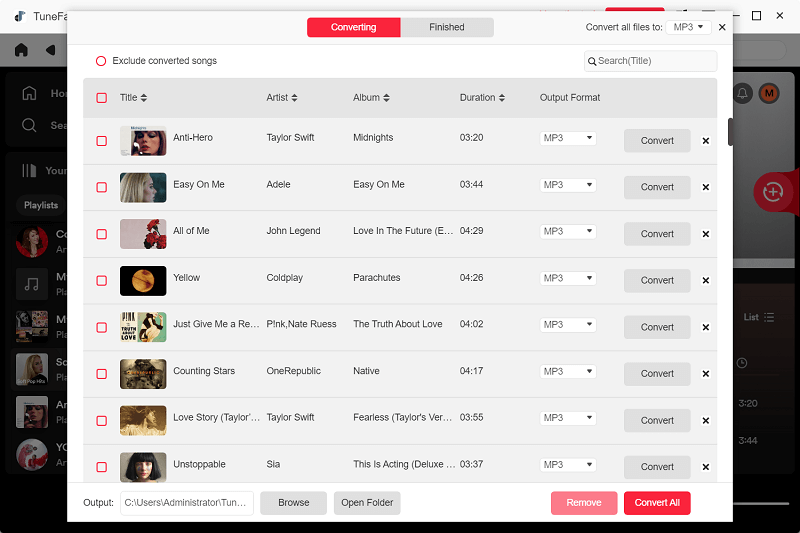
Step 4. On the "Converting" window, select MP3 as the output format (you can also choose other formats listed). Then, you can make the conversion start by clicking the "Convert All" button at the bottom. Once finished, find them by clicking "View Output Files" in the "Finished" section.

Verdict
Audacity stands out for its great accessibility and powerful audio-editing features as an open-source software for all users. However, it is not the best choice for those who tend to use it to record streaming music, especially those who are new to the field. Therefore, TuneFab All-in-One Music Converter, which is capable of offering a seamless experience for converting and outputting high-quality streaming music at a fast speed, emerges as a promising and the best alternative. Download it now to elevate your music recording experience!



